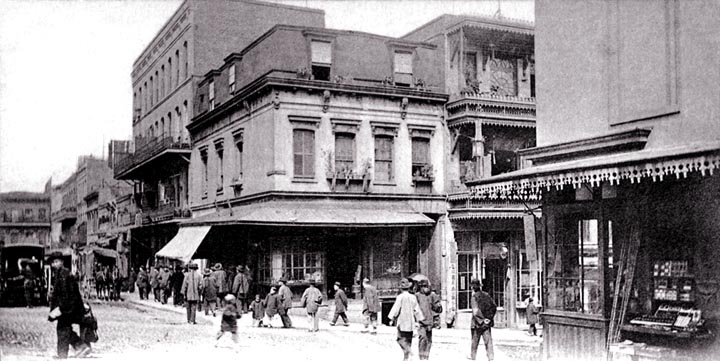Intersecting StreetsThose accustomed to North American cities will think of intersections as simple crossings of two streets a right angles. In much of the rest of the world, and in cities such as Boston and Washington, intersections are usually not so simple, and many intersections create enough extra open space that they border on being a square. We consider here street intersections that do not swell out to the extent of a square. As any merchant knows, a corner is a better location than any other, for the simple reason that there is twice as much exposure to the passing public. Corners are important for other reasons, however. They are normally the only locations at which buildings show more than one face, and the detail of buildings at the corner is varied and interesting. Intersections are also always the bottleneck in street traffic, of whatever kind, including pedestrians. There is a lot of friction at intersections - people and vehicles rubbing against or otherwise impeding one another. When it is people, not vehicles, the friction is actually an opportunity for informal social contacts (as long as the pedestrian density is not excessive, in which case it becomes an irritation). Millions of fleeting contacts arise at intersections in big cities every day, and they form part of the glue that binds a city's society together.
|
 Next City Design Home
E-mail |